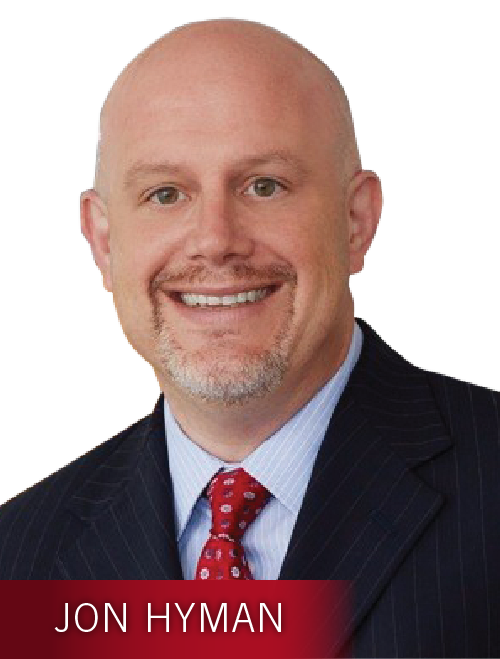
In the months after John Hindman lost his son to a heroin overdose in 2016, he discovered that he was not alone in his grief. As word of the tragedy spread among his colleagues at Leidos, a defense, aviation and health tech firm, many came forward to share their stories of loved ones struggling with addiction. He was so overwhelmed by the breadth of the problem that he wrote to his CEO challenging him to do something about it.
In a lengthy email titled “A Father’s Request” Hindman told Leidos CEO Roger Krone about his son Sean, who died at age 30, and his struggles with opioid addiction and later, heroin. He wrote of his grief and explained that many other employees face similar challenges, either dealing with their own addictions or those of loved ones. A few weeks later Krone replied. Hindman said his exact words were, “You broke me down. We’re all in.”
“I’ve worked here since 1985 and I never knew how many people were impacted by this epidemic,” Hindman said. “I felt that Leidos’ leadership had no idea of what was happening within the company. I realized that I needed to communicate this within Leidos, not with criticism but with honesty.”
The email launched not only a companywide initiative to combat the opioid epidemic, but also a national movement among business leaders to raise awareness and provide resources to their workforces and communities. The Reston, Virginia-based company distributed a CEO pledge to end opioid addiction that 60 corporate leaders around the country have signed so far.
Leidos, which employs 33,000 people worldwide, also held town hall meetings to gauge the extent of the problem and launched an internal public awareness initiative. It also reexamined its benefits and began looking at ways to better control the prescribing of opioids.
Opioid addiction has ravaged communities across the country. The misuse of these drugs is also a contributing factor in heroin addiction. In 2017, more than 70,000 people in the U.S. died from a drug overdose, a record, according to the Centers for Disease Control and Prevention.
Opioids, which are a risk factor for heroin use, were involved in the majority of those deaths. This has a direct effect on the workplace, impacting health care costs, productivity, absenteeism and recruiting. Employers in states such as West Virginia, Pennsylvania, Ohio and Kentucky have been particularly hard hit, as have those in the construction, trucking and manufacturing industries.
Given that two-thirds of those who are addicted to opioids are in the workforce and that many get their prescriptions through their employers, corporate leaders have found themselves on the front lines of a public health crisis. According to a report by the Society of Actuaries, the prescription opioid epidemic cost the economy $179.4 billion in 2018. This includes $60.4 billion in health care costs and $26.5 billion in lost productivity.
Many employers are finding innovative ways to fight the problem, from public awareness campaigns to offering treatment programs to managing prescription opioids to seeking alternatives to pain pills.
“This is something we’re all coming to grips with,” said Lorraine M. Martin, president and CEO of the National Safety Council. “Issues in our community will end up in the workplace. This is the first year that opioid deaths eclipsed deaths by car crashes. That’s a big alarm bell. It’s tricky because most people become addicted to drugs that have been prescribed to them and many get those prescriptions through their employer.”
 While 75 percent of U.S. employers have been directly affected by opioids, only 17 percent feel extremely well prepared to deal with the issue, according to a survey by the National Safety Council. More than a third have experienced absenteeism or impaired worker performance and have had an overdose, arrest or injury because of opioid use, they survey found.
While 75 percent of U.S. employers have been directly affected by opioids, only 17 percent feel extremely well prepared to deal with the issue, according to a survey by the National Safety Council. More than a third have experienced absenteeism or impaired worker performance and have had an overdose, arrest or injury because of opioid use, they survey found.
“I think we’re all at different places on this journey,” Martin said. “In areas that are hard hit employers have put in place programs that address recovery. Others still don’t understand that this is happening in their workforce or the role that they can play in fighting it. It’s important that employers understand how it affects their bottom line. The numbers are startling. Various industries and employers saw it quicker and some have taken very creative actions.”
One employer that saw firsthand how a regional opioid crisis also affected its workforce was Belden, a manufacturer in Richmond, Indiana. In 2016 the company was facing a labor shortage and having a hard time finding qualified applicants. About 1 in 10 applicants failed their drug test, so the company developed a novel approach to the problem. In 2018, Belden began offering drug treatment to those who failed their drug screening with a promise of a job if they successfully complete the program. The program, called Pathways to Employment, was so successful that the company launched it at its New York and Pennsylvania locations a year later.
“The program has grown to 30 in Richmond,” said Ellen Drazen, corporate communications manager at Belden. “Our locations in Syracuse and Washington (Pennsylvania) were chosen because they were seeing a similar impact on hiring due to the opioid epidemic.”
Belden has also signed the CEO pledge launched by Krone at Leidos.
In other parts of the country, business coalitions are taking collective action to address the problem.
In Kentucky, which has the fourth highest drug overdose rate in the country, a group of employers launched the Opioid Response Program for Businesses, which helps companies develop policies that support recovery, such as addressing the stigma around addiction. The program is run by the Kentucky Chamber Workforce Center.
“Stigma is one the most profound obstacles in dealing with this problem,” said Natalie Middaugh, a project coordinator at the Kentuckiana Health Collaborative, a nonprofit organization focused on improving health care delivery in Louisville and southern Indiana. “We need to help employers understand that addiction is a chronic disease and not a moral failing or a criminal issue.”
The collaborative joined the effort in 2017 after a significant spike in overdose deaths. In February of that year, Louisville emergency services handled 43 overdoses in one day.
“That was a huge turning point,” Middaugh said. “It’s a community health issue and a business issue, but there is also genuine concern about employees and their families.”
In the past five years, large employers have made a number of changes in their benefits plans in response to the opioid crisis, according to the Kaiser Family Foundation 2019 “Employer Health Benefits” survey. Forty percent launched or revised an employee assistance program in response to the opioid crisis, nearly a quarter modified their health plans to incorporate step therapy for opioid use, 38 percent provided additional health information to employees, 8 percent required employees with high opioid use to obtain prescriptions from only one provider, 21 percent asked their insurer or PBM to increase monitoring of opioid use, and 2 percent increased the number of substance abuse providers in their networks.
The National Business Group on Health and a number of regional employer coalitions recommend working with health plans and pharmacy benefit managers to develop benefit plans that feature safeguards such as limiting coverage for certain prescriptions to small quantities.
Managing opioid prescriptions was a top priority for Leidos, which in 2018 began restricting prescriptions on long acting opioids, such as morphine, oxycodone and fentanyl, and limiting short-acting opioids to seven days. The most common drugs involved in prescription opioid deaths are methadone, oxycodone and hydrocodone. Leidos worked with its pharmacy benefit manager ExpressScripts to implement the changes, according to Karen Kanjian, director of corporate benefits.
“Our part in this as benefits people is to look at what we’re doing in our programs, and we know that the frontline of defense is our PBM,” she said. “They see claims coming in real time and they have access to data, such as which doctors are prescribing and how much are they prescribing.”
Leidos also plans to work with dentists, who often prescribe opioids for procedures such as pulling wisdom teeth.
“My husband had a tooth pulled and got six weeks worth of pain pills that he never finished,” said Heather Misicko, a benefits consultant at Leidos.
A 2018 study in the Journal of the American Medical Association found a link between use of opioids after tooth extraction and long-term use. With 3.5 million wisdom tooth extractions performed each year, that’s a lot of pain medication sitting in people’s medicine cabinets, according to Meg Moynihan, director of strategic marketing at Stericycle. Safe disposal of medications is an important part of addressing opioid addiction, she said.
“Because these drugs are prescribed by doctors for legitimate medical conditions people don’t think of them as a risk,” Moynihan said. “I lock the liquor cabinet but I never thought of locking the medicine cabinet. Having medications lying around makes them more accessible to friends of children, housekeepers and visitors, particularly during open houses when selling a home. It takes less than 30 days to develop an addiction.”
In fact, 20 percent of Americans hold on to their prescription medications because they don’t know what to do with them, and 1 in 10 have offered or given their unused prescription drugs to friends or family members for either medical or recreational use, according to a 2019 study conducted by Stericycle. The company offers envelopes that can be mailed to the company anonymously for safe disposal.
In September, Stericycle and the National Safety Council released a free online toolkit to help employers develop and implement policies and programs that support opioid addiction recovery. It includes sample policies, employee presentations, white papers, videos and other materials designed to support a drug-free and recovery friendly workplace, according to Martin.
The toolkit recommends using the NSC substance abuse cost calculator, which takes into account location, industry and number of employees, to determine the economic impact of drug abuse. After that it lays out a 12-month plan for developing and implementing an opioid policy, from education to communication to vetting the policy with legal counsel.
The NSC also recommends working with health care plans to ensure that mental and behavioral health services are covered, encouraging annual screenings for substance abuse, making sure that alternative pain management treatments, such as non-opioid medications, acupuncture, and chiropractic and physical and occupational therapy are covered, and providing or enhancing EAP services.
“If you don’t know where to start, go to the toolkit,” Martin said. “We advise employers to look at their own health care benefits and to look into alternative medicines. Opioids are not always the best drug for managing pain. Also, make sure to have naloxone in all your facilities. It should be in every workplace and office.”
Naloxone is a medication, either in the form of an injection or a nasal spray, that can stop the effects of an opioid overdose. Before implementing a workplace naloxone program Martin suggests consulting with an attorney to make sure it complies with federal, state and local regulations and training employees on how to spot and respond to an overdose.
While there are many tools and approaches to tackling opioid addiction in the workplace, Hindman said that the most important factor is having company leaders who are committed to the effort. While not every company has the resources of a Leidos, employers are in a unique position to make a difference, he said.
“A third of all addicts are functioning in society, which means that they are in the workplace,” Hindman said. “It’s very hard for the working world to come to grips with this problem. It boils down to a company’s core values. You need to commit it to paper and use it as a platform to attract talent and not treat it as rhetoric. The problem exists broadly and deeply in society and since you’re reaching into society for the employees you need, it makes sense to invest in solving it.”










 Petriglieri: The bottom line is, organizations have a D-minus right now when it comes to thinking through working couples. This really stems from the logic we currently have in our organizations around talent management. When we think and talk about talent, we treat them as people with no strings attached. Now, we may say we recognize you have a personal life outside, but that is not the way almost all our talent management structures and processes are designed in organizations. This creates two main issues for working couples, one is a mobility issue and one is a flexibility issue. The mobility issue is that most career ladders are based on the logic of geographic moves. If you want to get to the top of this organization, you need experience in different geographic markets, perhaps you need experience on different sites of the business. This logic of geographic muse is really baked into the heart of our talent management processes. Now, it’s not that working couples are not mobile, that’s not what I found at all. However, they cannot be mobile in the same way that someone with a stay-at-home spouse can be or someone who is single. This is creating big issues for working couples, but also big issues in organizations. The few organizations who are really thinking this through well now are changing the logic from location to a logic of what skills they experience in the network that people need to develop.
Petriglieri: The bottom line is, organizations have a D-minus right now when it comes to thinking through working couples. This really stems from the logic we currently have in our organizations around talent management. When we think and talk about talent, we treat them as people with no strings attached. Now, we may say we recognize you have a personal life outside, but that is not the way almost all our talent management structures and processes are designed in organizations. This creates two main issues for working couples, one is a mobility issue and one is a flexibility issue. The mobility issue is that most career ladders are based on the logic of geographic moves. If you want to get to the top of this organization, you need experience in different geographic markets, perhaps you need experience on different sites of the business. This logic of geographic muse is really baked into the heart of our talent management processes. Now, it’s not that working couples are not mobile, that’s not what I found at all. However, they cannot be mobile in the same way that someone with a stay-at-home spouse can be or someone who is single. This is creating big issues for working couples, but also big issues in organizations. The few organizations who are really thinking this through well now are changing the logic from location to a logic of what skills they experience in the network that people need to develop.



